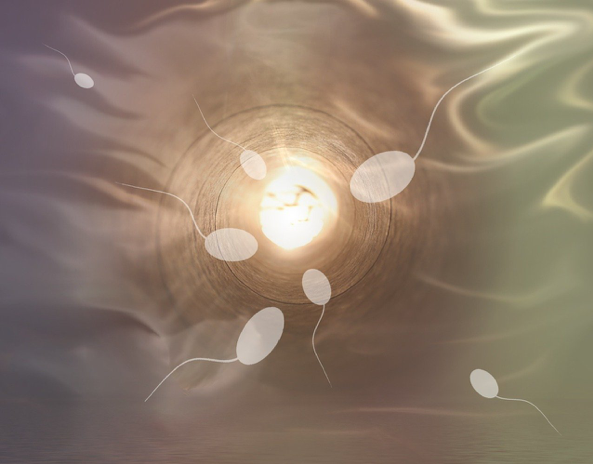Do you know about vasectomies? Vasectomies are minor surgeries that block the sperm from mixing into the semen that the males ejaculate through the penis. Even after a vasectomy, semen is still present in the ejaculation but cannot get a woman pregnant because the sperms are not present.

(Source)
The testes will still make the sperm, but the body will be responsible for absorbing them. It is a viable contraception method that requires consideration and appropriate planning beforehand.
What You Should Know Before Having a Vasectomy
Sperm are reproductive cells that male reproductive glands, testicles produce. Sperms carry vital DNA information that combines with a female’s eggs to form an embryo. Testicles are present in the scrotum, which is at the base of the penis.
Sperm stays in the epididymis, which is a coiled tube-like cell structure. Once ready for use, epididymis releases the sperm to pass through a long tube, vas deferens (vas), which connects to the ejaculatory duct. These long tubes connect with both the testicles and their epididymis near the groin area.
During ejaculation, seminal fluid releases from each seminal vesicle to mix with the sperm. This forms the semen that passes through the penis to enter a female’s reproductive region.
So, what is a vasectomy? It is a medical procedure that restricts the above natural process to prevent pregnancy and improve contraception.
About Vasectomies: The Procedure
It can take place in your urologist’s office, a hospital, or a surgery center. By working with your urologist, you may decide the need for sedation (sleep during the procedure). Sedation quite often occurs at a hospital or surgery center under the discretion of a professional urologist.
Following that, you may have to sign a permission report to ensure that you allow your urologist to perform the procedure while remaining sedated. Keep in mind that some states require compliance with certain health and medical laws of consent.
At the beginning of the procedure, you will have your scrotal area shaved and washed (antiseptic solutions). Local anesthesia will block any sharp pain during the procedure.
No-Scalpel Vasectomy
The no-scalpel vasectomy is quite straightforward in the procedure. It involves the urologist identifying the vas that is under your skin. Using a clamp, the professional will then hold the nerve in place while making a minor incision to spread and gently pull it out. From then on, the urologist will precisely make cuts, perform ligation, and place the nerve back at its place.
Conventional Vasectomy
Conventional vasectomies are also common among males. It involves making one or two incisions on the scrotum area that connects with the vas deferens. The urologist will cut the vas deferens from one side and remove a part of the nerve. This leaves a short gap in which the urologist may either place a tissue to cover the gap or tie the ends of the vas.
The same occurs on the other vas deferens, generally through the same incision or another. In the end, the urologist will close the scrotal skin area using dissolvable stitches.

Post-Vasectomy
As a standard procedure, your doctor will provide you with clear and easy-to-understand instructions to care for your health. Further, one of the main things you need to do is avoid sex for the time your doctor suggests. Normally, it is for 3-7 days and includes other aerobic exercises as well.
While some men can return to their normal routine with specific cautions, others may take up to a week to heal completely. Wearing a support undergarment can help, such as jockstraps. Your doctor may also advise you to place ice packs on the swollen area of the scrotum to reduce pain.
Bear in mind that vasectomy does not yield results right away, and you may still get a female pregnant. This is because there may be sperm present in the ejaculatory duct. Hence, it is advisable to let all the sperm clear from the duct before engaging in sexual intercourse. However, if you engage in such activities, it is best to use birth control and additional contraception such as condoms and vaginal caps.
How Does a Vasectomy Work?
Sperms are microscopic cells that join with female eggs. These cells take time to clear when the vasectomy procedure ends. In fact, the sperm remains in the ejaculatory duct and the vas deferens that carry them to the long tube.
Vasectomy hinders the carriage of semen from the male reproductive organs to the penis for ejaculation. By cutting and tying the vas deferens, the sperm remain in the epididymis, and only seminal fluid discharges from the penis into a female’s vagina. Normally, within a three-month period, your semen might not contain any sperm, making the contraception effective and the vasectomy successful.
All About Vasectomies: Conclusion
If you and your partner agree to get a vasectomy to enjoy sex without the risk of getting pregnant, you should get in touch with the top urologists at Fifth Avenue Urology.
Call 212-675-3186 to schedule an appointment.
Reference Links
https://www.webmd.com/sex/birth-control/vasectomy-overview
https://www.urologyhealth.org/urology-a-z/v/vasectomy
https://my.clevelandclinic.org/health/treatments/4423-vasectomy-sterilization
https://www.healthline.com/health/birth-control-vasectomy#takeaway
